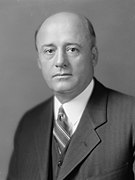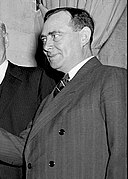| |||||||||||||||||||||||||||||||||||||||||||||||||||||||||||||||||||||||||||||||||||||||||||||||||||
All 435 seats in the United States House of Representatives 218 seats needed for a majority | |||||||||||||||||||||||||||||||||||||||||||||||||||||||||||||||||||||||||||||||||||||||||||||||||||
|---|---|---|---|---|---|---|---|---|---|---|---|---|---|---|---|---|---|---|---|---|---|---|---|---|---|---|---|---|---|---|---|---|---|---|---|---|---|---|---|---|---|---|---|---|---|---|---|---|---|---|---|---|---|---|---|---|---|---|---|---|---|---|---|---|---|---|---|---|---|---|---|---|---|---|---|---|---|---|---|---|---|---|---|---|---|---|---|---|---|---|---|---|---|---|---|---|---|---|---|
| |||||||||||||||||||||||||||||||||||||||||||||||||||||||||||||||||||||||||||||||||||||||||||||||||||
 | |||||||||||||||||||||||||||||||||||||||||||||||||||||||||||||||||||||||||||||||||||||||||||||||||||
| |||||||||||||||||||||||||||||||||||||||||||||||||||||||||||||||||||||||||||||||||||||||||||||||||||
The 1942 United States House of Representatives elections were elections for the United States House of Representatives to elect members to serve in the 78th United States Congress. They were held for the most part on November 3, 1942, while Maine held theirs on September 14. This was the first election after the congressional reapportionment based on the 1940 census, and was held in the middle of President Franklin D. Roosevelt's third term. With involvement in World War II, it was the first wartime election in the United States since 1918.[1]
Roosevelt's Democratic Party lost 45 seats to the Republican Party, retaining only a slender majority even though they lost the popular vote by over 1 million votes (3.9%). The election was the second of four times in the 20th century in which either party won the House majority without winning the popular vote, with the previous three instances occurring in 1914, 1952, and 1996; Democrats won the House majority without winning the popular vote in the former election, while Republicans did so in the latter two.[2][3]
This was the most successful congressional election for Republicans since 1930, and the first time since that election cycle that the House GOP actually won the popular vote.[4] The main factor that led to the Republican gains during this election cycle was dissatisfaction with the conduct of America's war effort in World War II.[1]
As of 2024[update], this was the last time the House of Representatives was made up of five parties. This was also the smallest House majority that the Democrats had up until the 2020 elections. Voter turnout was historically low for the time, which was attributed to the absence of military men and the apathy of workers at war production plants, many of whom had failed to re-register to vote in their new communities or become accustomed to local candidates.[1]
Cite error: There are <ref group=lower-alpha> tags or {{efn}} templates on this page, but the references will not show without a {{reflist|group=lower-alpha}} template or {{notelist}} template (see the help page).
- ^ a b c James A. Hagerty (November 3, 1942). "Only 65% of Vote is Likely Today". The New York Times.
- ^ Wang, Sam (February 2, 2013). "The Great Gerrymander of 2012". The New York Times. Retrieved May 29, 2013.
- ^ "In 1996, House Democrats also won the popular vote but remained in the minority (kind of)". Washingtonpost.com. November 12, 2012. Retrieved December 3, 2012.
- ^ Harding, John (1944). "The 1942 Congressional Elections". American Political Science Review. 38 (1): 41–58. doi:10.2307/1949422. ISSN 0003-0554. JSTOR 1949422. S2CID 147042082.


